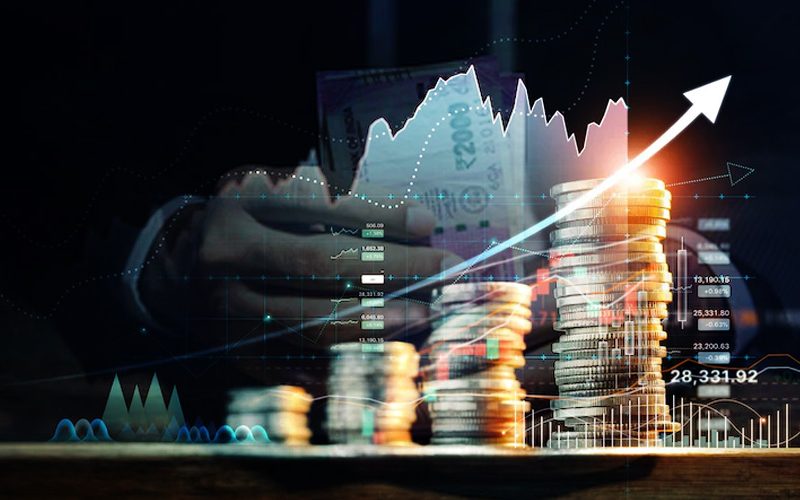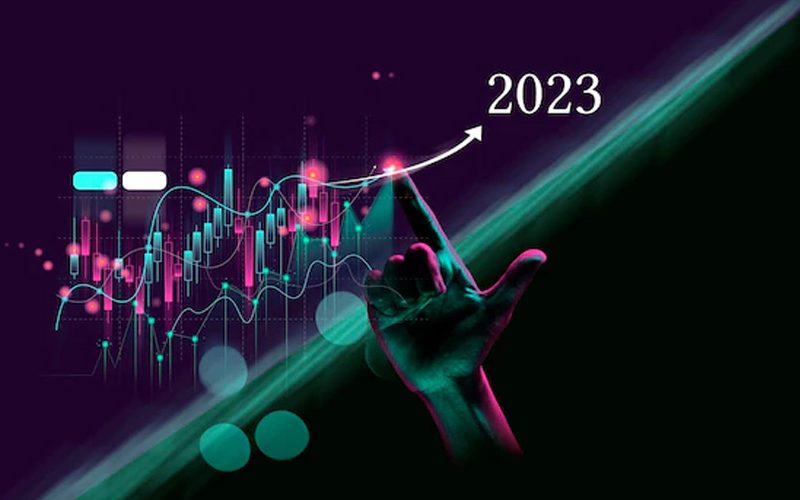Top highlights of the Indian Economy in 2022 and this is a quick recap of the whole year
Following two years of the COVID-19 pandemic, the Indian Economy experienced a resurgence in 2022. Defying all predictions about the pandemic’s impact, India recovered faster than even the world’s most developed countries and maintained a stable rate of growth. Economic activity has resumed, and the coming year promises more signs of improvement. Here’s a quick rundown of the Indian Economy major highlights in 2022.
1. India Rises to Become the 5th Largest Economy
In September this year, India overtook the United Kingdom as the world’s fifth-largest economy. According to Bloomberg, the Indian economy’s nominal cash size was $854.7 billion, compared to the UK’s $814 billion. According to the National Statistical Office (NSO), India’s gross value added (GVA), which is GDP minus net product taxes and reflects supply growth, increased by 12.7% between April and June 2022. While India experienced stable growth, the United Kingdom has experienced its highest inflation rate in decades. According to the Bank of England, the UK is already in a recession that could last until 2024.
2. Economic Growth
At a time when many major economies around the world were struggling as a result of the COVID-19 pandemic’s aftereffects, India demonstrated signs of stability. The country’s economy grew by an impressive 13.5 percent in the June quarter of 2022 (Q4 of FY 22), despite contractions in the world’s two largest economies, the United States and the United Kingdom. The country’s economy expanded at a 6.3% annual rate in the third quarter.
3. Increased Purchasing Power
The Indian economy’s impressive performance was also reflected in a rise in purchasing power. As markets reopened and economic activity resumed, the country saw an increase in private consumption forecast by World Consumption. Private consumption in the country is expected to account for 9.4% of GDP, up from 7.9% last year. Imports are also expected to fall to 15.4 percent in FY 2022, down from 35.5 percent in FY 2022.
4. Inflation
In November 2022, India’s wholesale inflation rate fell to a 21-month low. According to data from the Commerce Ministry, the country reported a WPI of 5.85 percent, down from 8.39 percent in October. India reported a WPI of 14.87 percent in November of last year. Inflation in the country has also fallen to an 11-month low of 5.88 percent.
5. India Manufacturing PMI
The Standard & Poor’s Manufacturing Purchasing Managers’ Index (PMI) is a weighted average of indices that include new orders, output, employment, supplier delivery times, and purchase stocks. It indicates the overall health of the economy, as well as key economic drivers such as exports, capacity utilization, employment, and inventories. In India, the index reached a high of 56.4 and 56.2 in July and August, respectively.
6. Unemployment Rate
The Centre for Monitoring Indian Economy (CMIE) estimated that nearly 53 million Indians were unemployed in December 2021, with a large proportion of them being women. The unemployment rate was 7.91% in December 2021, and despite a slight drop in early 2022, the figure now stands at a concerning 8%. (as of November 2022). According to CMIE’s Managing Director Mahesh Vyas, the majority of the jobs added in November were in rural India, while the increase in the unemployed was primarily in urban India.
7. Indian Rupee in 2022
This year, the Indian rupee fell to an all-time low against the US dollar, falling below 82 rupees to the dollar. The value of any currency is determined by the currency’s demand as well as its supply. When a currency’s supply expands, its value falls. On the other hand, when a currency’s demand rises, so does its value. In the larger economy, central banks determine currency supply, while currency demand is determined by the number of goods and services produced.
8. India’s retail inflation rate
Consumer Price Index (CPI) inflation, also known as retail inflation, remained above the central bank’s 6% upper tolerability threshold for ten months before falling to 5.88% in November. In April, it hit an eight-year high of 7.79%, with rural inflation at 8.4% and urban inflation at 7.1%. Analysts attributed the increase to a sharp increase in food inflation, which rose to a 17-month high of 8.4% from 7.7% sequentially. They explained how the ongoing global rise in crude prices has affected food, fuel, and lighting, as well as transportation and communication.
9. India’s Interest Rate
The Monetary Policy Committee (MPC) unanimously voted in April to maintain the repo rate at 4%. The decision was made to “remain accommodative while focusing on withdrawal of accommodation to ensure that inflation remains within the target going forward, while supporting growth,” according to the statement. The Governor stated that the start of geopolitical tensions in Eastern Europe on February 24th caused a “tectonic shift” in the global economy. Commodity and financial markets were characterized by extreme volatility.
10. India’s GDP growth
The Indian economy grew by 9.7% in the first half of the current fiscal year, compared to 13.7% in the same period last year. GVA increased by 9% compared to 12.8% in the same period last year. GDP rose 13.5% in the June-end quarter, despite being lower than the RBI’s projection, thanks to an increase in private consumption spending and gross fixed capital formation, offset by a decrease in government final expenditure.






